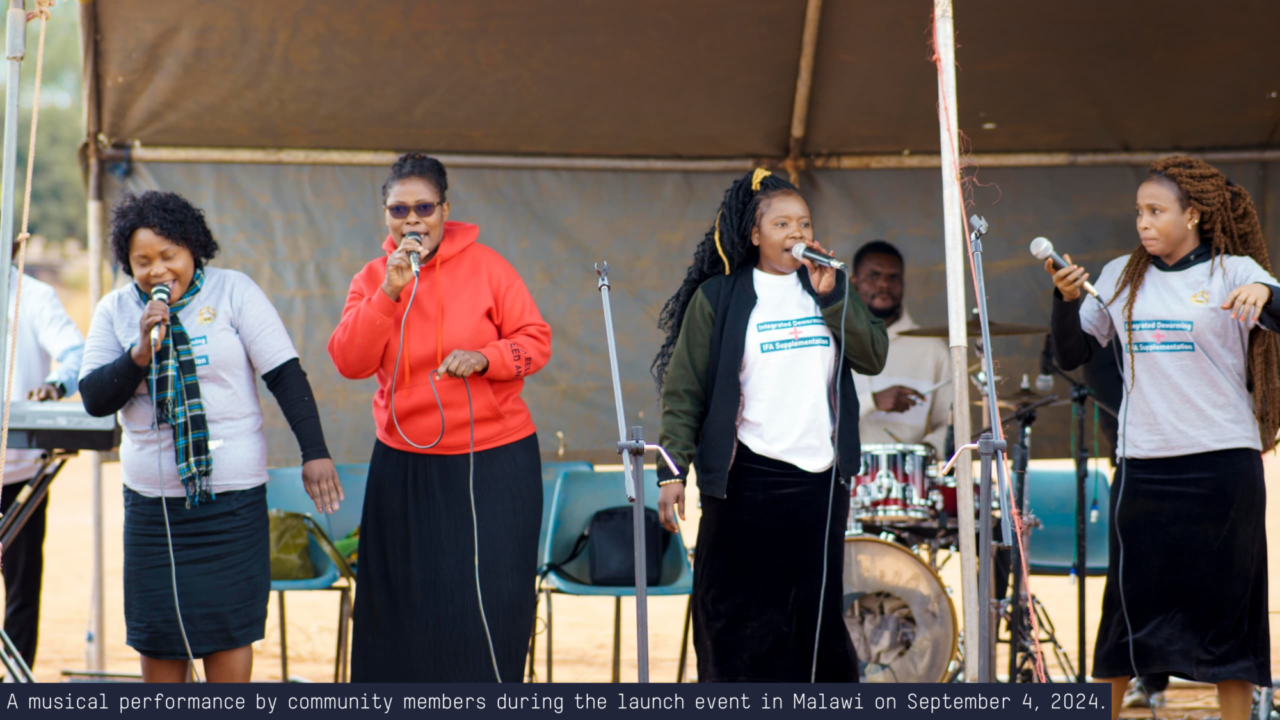With increased COVID vaccination rates and eased pandemic-era restrictions, deworming programs across the geographies in which we work are experiencing some sustained reprieve – schools have reopened and attendance rates are increasing. Our government partners have been able to reorient their focus back to working on routine health programs, including deworming.
Pandemic Challenges, Shifts, and Outcomes for Deworm the World
The pandemic has challenged us, like so many others, greatly but it also pushed government deworming programs to quickly adapt. Across our Deworm the World geographies, deworming programs minimized face-to-face contact by shifting a significant amount of planning and implementation to remote channels of communication. After 18 months of COVID shutdowns and shake-ups, shifts back to a level of relative normalcy have allowed governments to implement mass deworming in great numbers as programs adapt to a new phase of COVID-era treatment. In 2021, together with our government partners, we supported delivering treatments to over 191 million children across India, Kenya, Nigeria, and Pakistan—14 million more treatments than the previous year. This figure includes:
- 6.4 million children in Kenya, the highest treatment coverage for STH in that country since 2016
- 4.8 million children in Nigeria, including expansion to Lagos state and the highest treatment figure to date
- 8.3 million children in Pakistan, more than a three-fold increase from our prior highest total (in 2019)
- 172 million children in India, marked by increased treatment coverage in the states we support
In partnership with governments, we designed and piloted different implementation and monitoring approaches such as alternative models for hard-to-reach groups, remote coverage validation and process monitoring, and an increased use of digital platforms. While some of these adaptations are temporary, only aiding the programs to function in rapidly changing environments, other strategic adaptations have shown considerable return and will be maintained through 2022 and beyond.
Alternative Models for Hard-To-Reach Groups in Pakistan
In Pakistan, schools remained closed for most of 2020 and 2021 due to the pandemic, which was quite disruptive for deworming programs. However, we spent much of this time planning for how to reach school-age children that have been considered hard to reach. Across at-risk districts in Pakistan, approximately 50% of school-age children are hard to reach—30% are out of school and another 20% are enrolled in private or religious schools that are currently not regulated by existing governance structures, making it very difficult to establish communication with these schools. The situation in Sindh province is even more challenging, with over 85% of children considered hard to reach.
In partnership with the government, to address these issues we developed an alternative model for program implementation: rather than using teachers to deliver treatments, which restricts administration to schools, existing government health workers deliver treatments in both schools and communities. This strategy has been used in Pakistan for vaccination campaigns, including for COVID-19 vaccinations, and was leveraged and adapted to deliver deworming tablets, while remaining cost-effective. Through this new approach, we supported the treatment of approximately 2.6 million school-age children in Sindh – a huge increase from the initial round in early 2020 that reached 212,000 school-age children. We are applying the lessons learned from our experience in Sindh to other regions in Pakistan, as well as other geographies with similar contexts, such as Lagos in Nigeria.
Remote Coverage Validation
Just as we modified aspects of program delivery during this time, we also explored and tested adapted monitoring and evaluation methods to minimize contact and ensure the safety of program participants and staff. Early in the pandemic, we conducted a remote coverage validation pilot in Kenya, where households of intended deworming treatment recipients were contacted over the phone to answer questions about whether their children received treatment. The pilot in Kenya resulted in positive indications that remote data collection could be employed in other geographies and demonstrated significant cost savings over in-person surveys. These findings led us to further test remote coverage validation across all other program geographies.
We also employed remote process monitoring in India to monitor the activities during National Deworming Day rounds in 2020 and 2021, and further tested remote CV in Nigeria and India during the pandemic due to requirements of safety and lockdown restrictions. The results of these additional tests were less conclusive, and indicated the need for further learning about remote monitoring activities. As we move back to our “business as usual” of leveraging observational capabilities through in-person monitoring, we will continue to iterate on the remote monitoring methodologies, and identify opportunities and contexts in which remote monitoring would be a cost-effective and rigorous strategy for mature programs.
Increased Use of Digital Platforms in India
In India, the use of digital platforms has been instrumental amid COVID-19 where in-person gatherings were restricted. Evidence Action supported state governments to use technology where possible for trainings, and to reinforce knowledge and increase preparedness of drug administrators. Short training videos for frontline health workers were disseminated through existing government educational platforms and WhatsApp. Working with state governments, we customized a digital resource kit that included short training videos, text and WhatsApp messages, and social media plans for National Deworming Day. Printing of awareness materials such as posters and banners was replaced by including key deworming messages and COVID-19 safety guidelines on the reverse side of essential print materials (such as treatment reporting forms) used by frontline health workers and teachers.
In 2021, we supported the treatment of over 172 million school-age children in India. Using digital platforms and technology has proven to be a better use of limited government resources to expand the capacity and enhance the effectiveness of deworming programs. The positive results and outcomes of implementing digital solutions to deliver large portions of training and key messages has given us the confidence to explore other ways in which technology can improve government program delivery in the coming years.
Looking ahead: Treatment and Program Adaptations Going Forward
We are thankful that schools are once again open and able serve as the foundation for deworming treatment. Throughout the pandemic we quickly adapted our programs, and in doing so were able to test new strategies, understand what works, and implement these changes where the need and opportunity are the greatest—ensuring our deworming programs continue to improve the lives of millions of children. Across all of our geographies we’re targeting to reach 260 million children in 2022 – and with many deworming rounds already having taken place successfully, we’re confident that these targets can be met.



